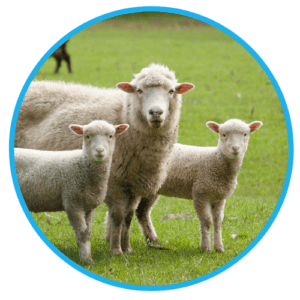It is very important to have safe and suitable handling facilities on your property before you even get your stock. It saves time and stress if you can rely on your yards to contain your animals while you perform the many tasks asked of you as a lifestyle farmer, such as drenching, tagging, vaccinations or shearing. From a vet’s point of view, if the animals are waiting in the yards for us when we arrive for an appointment it saves a lot of time spent chasing them around a paddock (and therefore is more cost effective for the client).
First of all, if you feel you won’t be using your yards that often, and have a friendly neighbour with a set of yards within easy walking distance, it may be best to negotiate a “shared agreement” which may be settled with some baking or a bottle of wine.
Yards don’t have to be fancy or big, but they do need to be safe for the people and animals spending time there.
There are many plans available on the internet, but there are a few important points to consider:
- Look at the best place to have them. Think about how you will get your animals into them. It is easiest to run the animals along a fence line towards a corner rather than into the middle of a paddock. They don’t like to run towards loud noises so away from a house or road is best. They don’t like to run from sun into shade, or from one type of surface to another; so if these changes exist try not to have these changes at a crucial point (for example as they pass through a gate into a pen). Cattle would rather move slightly uphill or on the level than downhill.
- Consider whether you need a loading ramp. If stock arrives on a trailer as young calves or lambs they can usually be placed directly in the paddock. If you don’t plan on having livestock leave the farm on a truck you won’t be needing one.
- Get professional advice and have a plan. There are several local handymen that build these – ask for help!
- Have an area where animals waiting to be examined can be held close at hand (holding pen).
- Have a race with (ideally) a head bail to allow for easy and safe handling. As the stock move down the race they should see “freedom”. That is, no fences directly across their vision. Races are essential if you have cattle.
- Don’t scrimp on materials. If the yards are intended for cattle then the minimum size of timber used should be 150x50mm.
- The height of a sheep pen should be between 850-1000mm. Races in which most sheep work gets done should be 900mm wide. If you tend to have feet problems in your sheep – this is common in wet areas – a small pen that could accommodate a foot bath would be useful. If you have both cattle and sheep, don’t build two sets of yards. Cattle yards can be used for sheep – you can just put an additional rail at sheep eye height to help with yard movement.
- Consider drainage. Standing knee deep in mud in the middle of winter is no one’s idea of fun!
- Circular or semi-circular pens and races don’t have corners for animals to bunch into.
Please call us if you have any questions about this – we are more than happy to pop out and take a look at what you have and offer any suggestions.
Some important safety tips to consider
- Plan your escape route – especially when working with cattle
- Never get in the race with large cattle and never put your arms or legs between the rails
- Don’t try to move a dangerous bull on foot or alone
- Wash and dry your hands after working with the animals. Wear gloves if possible
- Keep yards tidy and maintained
- Before working with sheep in the yards, leave them for 30minutes to calm down if possible
- Use your legs, not your back, to lift sheep if you have to

